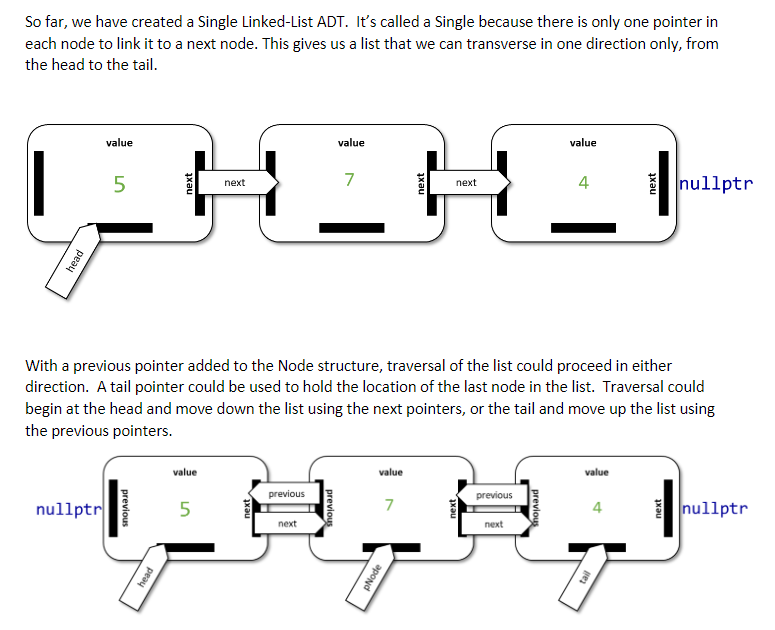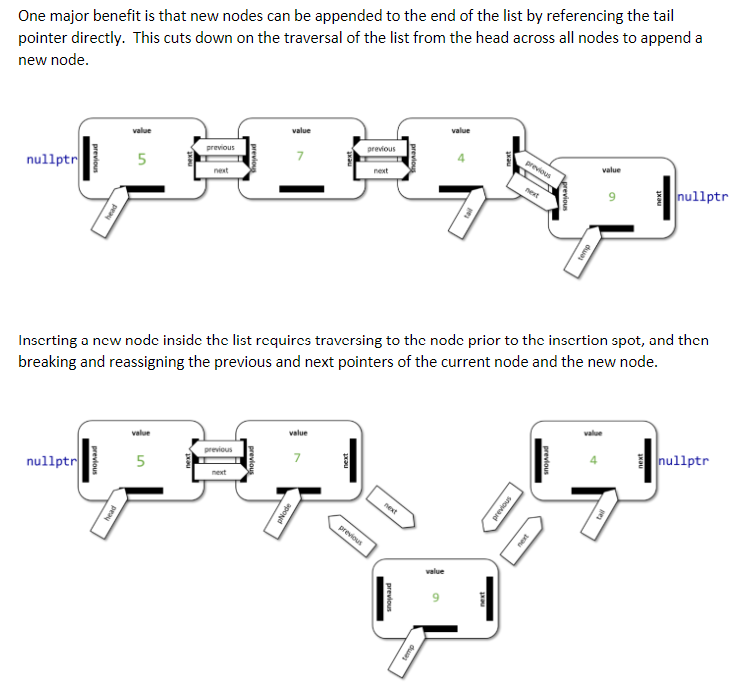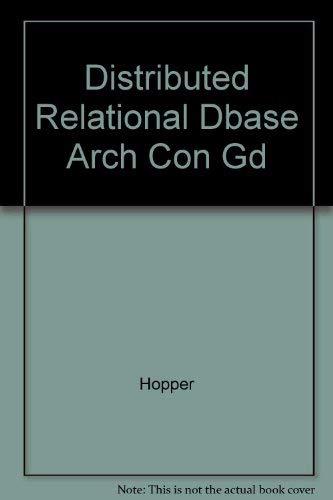Question
This is in C++ NOTE:: PLEASE, MAKE SURE TO INCLUDE --->>>> COMMENTS, HEADING FILES (To identify each content belongs to), AND OUTPUT (Including the menu
This is in C++
NOTE:: PLEASE, MAKE SURE TO INCLUDE --->>>> COMMENTS, HEADING FILES (To identify each content belongs to), AND OUTPUT (Including the menu and selection) Thanks
==================================== List.h =======================
#ifndef LINKEDLIST_LIST_H #define LINKEDLIST_LIST_H // constants // -------------------------------------------------------- const int LIST_HEAD = 0; // list position of head node const int LIST_TAIL = -1; // specify current tail position
class List { private: // internal storage structure for a Node struct Node { int value; Node* next; };
Node* head; // hold reference to head of the list (Node[0]) int size; // current size of the list (empty==0)
public: List(); ~List(); int getSize(); bool isEmpty(); void insert(int value, int position=LIST_TAIL); int remove(int position=LIST_TAIL); int read(int position); void modify(int value, int position); int findIndex(int);
private: Node* traverse(int position); };
#endif //LINKEDLIST_LIST_H
========================= List.cpp ===============================
#include
#include "List.h"
// -------------------------------------------------------- // Types // --------------------------------------------------------
// simulated menu choice operations on the list enum ListOp { LIST_APPEND = 'A', LIST_INSERT = 'I', LIST_UPDATE = 'U', LIST_DELETE = 'D', LIST_EXIT = 'E' };
// -------------------------------------------------------- // Function Declarations (proto-types) // -------------------------------------------------------- char getMenuOption(); void appendList(List* list); void insertList(List* list); void updateList(List* list); void deleteList(List* list); void printList(List* list);
// -------------------------------------------------------- // Function Definitions // -------------------------------------------------------- int main() { srand(time(NULL)); // refresh random numbers
List list; // the one and only List
ListOp operation; // user choice to continue do {
// menu operations operation = static_cast
}
// print the current list printList(&list);
} while(operation != LIST_EXIT);
return 0; // return success to OS } // main
/** * Prompt user for operation to perform next * @return 1st letter of menu option (E to exit) */ char getMenuOption() { char menuChoice;
std::cout "; std::cin >> menuChoice;
// force menu choice to uppercase menuChoice &= ~32; // turn off bit 5
return menuChoice; } // getMenuChoice
/** * Append a random number to the end of the list * @param list -- pointer to a list ADT */ void appendList(List* list) {
srand(time(NULL)); // refresh random numbers
int value = rand() % 100; // calc random number value list->insert(value); // test 1-parameter insert w/ default position
std::cout getSize() - 1
/** * Insert a random number at a random position * @param list -- pointer to a list ADT */ void insertList(List* list) { int value = rand() % 100; // calc random number value int position = list->getSize(); // init to size in case list is empty
if(list->isEmpty()) { list->insert(value); // test 1-parameter insert w/ default position } else { position = rand() % list->getSize(); // calc random position (0 (size - 1)) list->insert(value, position); // test 2-parameter insert }
std::cout
/** * Update a random list position with a new random number * @param list -- pointer to a list ADT */ void updateList(List* list) { if (list->isEmpty()) { std::cout getSize();
list->modify(value, position); // test modify method
std::cout
/** * Delete 1 value at a random position in the list * @param list -- pointer to a list ADT */ void deleteList(List* list) { if (list->isEmpty()) { std::cout getSize(); // calc random position
int value = list->remove(position); // test remove method
std::cout
/** * Print the current list to the console * @param list -- pointer to a list ADT */ void printList(List* list) { int size =list->getSize();
if (size) { std::cout read(i); if (i
} // default constructor
/** * Destructor - clean up nodes */ List::~List() { // if list is not empty if (head) {
// repeat until head moved past end of list while (head->next) { Node* temp = head; // hold reference to current head Node head = head->next; // move head pointer to next node in list delete temp; // delete old head Node }
} // is list empty } // destructor
/** * Accessor for the list size property * @return int size (empty = 0) */ int List::getSize() { return size; } // getSize
/** * Signifies if the list is empty or not * @return bool True if empty (size==0) */ bool List::isEmpty() { return size == 0; } // isEmpty
/** * Add a new value into the list at the head, a * specified position, or at the tail if position * is -1 or invalid position * @param value - int value to store * @param position - position in list to store value (default -1) */ void List::insert(int value, int position) { Node* temp = new Node{value, nullptr};
if (position = size) position = size;
// determine where in list to insert if( size == 0 || position == LIST_HEAD) { temp->next = head; // new node points to head head = temp; // move head pointer to new node } else { // middle or tail of list Node* pNode = head; // traverse list to node - 1 pNode = traverse(position - 1);
// insert node between current and next node temp->next = pNode->next; // new node points to next node pNode->next = temp; // current node points to new node
} // where in list
// increment size of the list size++;
} // insert
/** * Remove a value from the list at a specified position and * return it to the caller * @param position - position in the list or tail if -1 * or invalid position * @return - value removed from the list */ int List::remove(int position) { int value = -1;
if(isEmpty()) return value; Node* temp; if(position == LIST_HEAD || size == 1){ //remove head temp = head; head = temp->next; } else{ // middle or tail if(position == LIST_TAIL || position == size) position= size-1;
Node* pNode = traverse(position-1); temp = pNode->next; pNode->next = temp->next; }// where are we removing from value = temp->value; delete temp; size--; return value; } // remove
/** * Return a value from the list at a specified position without * removing it * @param position - position in the list * @return - value found at position (-1 if not found or invalid position) */ int List::read(int position) { int value = -1;
if (size > 0) { Node* pNode = traverse(position); value = pNode->value; }
return value; } // read
/** * Modify a value at a specified position in the list * @param value - new value * @param position - position in the list */ void List::modify(int value, int position) { if (size > 0) { Node* pNode = traverse(position); pNode->value = value; }
} // modify
// Private methods /** * Iterate node pointer to specified position in the list * @param position - 0 to size-1 * @return pointer to Node at List[position] (or null if empty) */ List::Node* List::traverse(int position) { Node* pNode = head; // start at head of list (null if empty)
int counter = 0; // zero indexed list // (don't move if position == 0) while(counter next) { pNode = pNode->next; counter++; } // traversal
return pNode; }
========================= Assignment ============================



Step by Step Solution
There are 3 Steps involved in it
Step: 1

Get Instant Access to Expert-Tailored Solutions
See step-by-step solutions with expert insights and AI powered tools for academic success
Step: 2

Step: 3

Ace Your Homework with AI
Get the answers you need in no time with our AI-driven, step-by-step assistance
Get Started


